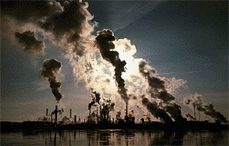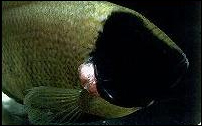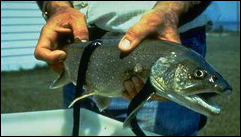Toronto's Impact on the
Mixedwood Plains
All of the major cities in the Mixedwood plains are all very developed, especially Toronto. Toronto not only provided abundant supplies of fresh water from the lakes, fertile soils and a relatively light climate for our Canadian ancestors. The area attracted human settlers from the beginning. At first, the Europeans were interested in the fur trade, so they shipped the furs of the animals they hunted from Canada all the way back to Europe. Then, not much later started the industrial economy in the early 1900ís. Human settlement made city of Toronto the way it is now.

Human activity in Toronto, however, had a large, negative impact on the environment in the Mixedwood plains. Do you recall those smog warnings in Toronto last year? This smog came from the greenhouse gases released into the atmosphere. These greenhouse gases stay in our atmosphere and trap heat energy inside. In addition in climate change and global warming, these gases are hazardous to the body. Greenhouse gases also change the behavior in animals, make the sea level rise, create acid rain, and damage food and crop supplies. Right now, the highly populated Niagara Region in southern Toronto is suffering a major crisis due to all the pollutants in the air. Scientists and researchers believe that long-term damage might have been done to air there already and immediate action must be taken.

The amount of pollution in the great lakes is also rising. Water pollution became a major problem after the 1969, when one of the rivers down at the United States caught on fire. The Cuyahoga River there was extremely polluted. Pollution in the great lakes is becoming a problem to. All this pollution would affect the water wildlife in the Great Lakes, and eventually, affect us. Some companies dump their sewage waters, toxins, pesticides, and garbage into the Great Lakes, but dumping this junk into the water isnít a proper solution. As a result, fish and other aquatic wildlife have been affected. The media tried to keep some of this information secret but some fish have already developed tumors and there were sightings of three-legged frogs near the Great Lakes.

Finally, human activity introduced a few new species into our ecozone. Some non-native species are useful, but most of these introduced species to not cope well in the Mixedwood plains environment. For example, when the sea lampreys were introduced into the Great Lakes, the number of native freshwater fish began to drop dramatically. The sea lampreys have hardly any predators and are flourishing in such a safe environment. Efforts have been made to stop the sea lamprey but most of the chemicals used to kill them affect other fish. Currently, researchers are working on a chemical TFM, which is fatal to sea lamprey larvae. TFM, however, is not entirely safe either. This goes to show how hard it is to correct environment problems once they are made.
A Joshua Liu and Timothy Yip Production 2003-2004
|
